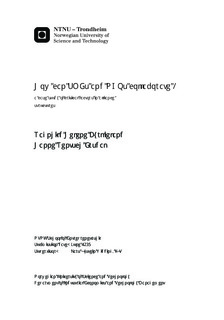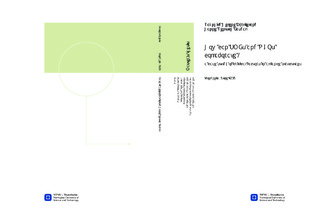| dc.contributor.advisor | Widding, Lars Oystein | nb_NO |
| dc.contributor.author | Byrkjeland, Ragnhild Helene | nb_NO |
| dc.contributor.author | Ersdal, Hanne Rentsch | nb_NO |
| dc.date.accessioned | 2014-12-19T14:29:41Z | |
| dc.date.available | 2014-12-19T14:29:41Z | |
| dc.date.created | 2014-06-12 | nb_NO |
| dc.date.issued | 2013 | nb_NO |
| dc.identifier | 724514 | nb_NO |
| dc.identifier | ntnudaim:9212 | nb_NO |
| dc.identifier.uri | http://hdl.handle.net/11250/266619 | |
| dc.description.abstract | This Thesis search to answer the question: How can small and medium sized enterprises [SMEs] and non governmental organisations [NGOs] build a robust alliance in order to launch a new product in bottom of the pyramid [BOP] markets? With SMEs expanding their business to the global market and NGOs structuring their operations in a business like manner the stage is set for strategic alliances between SMEs and NGOs. Collaboration between the two types of organisations can open up access to resources otherwise unattainable for the parties. Due to the newness of this phenomena there exist deficiencies in the literature on strategic alliances between SMEs and NGOs. This Thesis? theoretical contribution will be to challenge three of the gaps in the existing literature. This Thesis can be described as a three story building. The Basement is the foundation and consists of our pre-understanding, interests, choices of theory, research design,research question and purpose. This floor also consist of us as researchers going out into the world and studying true interviews what actors in SMEs and NGOs are involved in. This is the basis of our Thesis.The second storey is the Middle Floor. This is where the craftsmanship of conducting an embedded single case study lies. It is the generation, analysation and interpretation of data, both theoretical and empirical. The result of this work is presented as a framework based on theoretical findings that is used to evaluate an SMEs-NGOs alliance. The empirical findings from interviews were used to validate the framework and further refine it as a guide to create awareness for critical factors that will have impact on an alliances throughout its lifespan.The last floor is the Penthouse, a presentation of the results and their meaning. How to build a robust alliance between SMEs and NGOs? We suggest that the partners listen to each other as they discuss the factors: resource contribution and need, strategic objectives, motivation and commitment and alignment of goal and thereafter together make the decision on how to structure the alliance. This Thesis can be seen as a groundbreaker within the field of strategic alliances between SMEs and NGOs in highlighting what can and cannot be transferred from theories describing multinational enterprises-NGO alliances and SME alliances to SMEs-NGOs alliances. However, the limitation of the Thesis is restricted to Scandinavian SMEs and entrepreneurial NGOs searching to form an alliance. Further work is needed to validate the findings of this Thesis externally. | nb_NO |
| dc.language | eng | nb_NO |
| dc.publisher | Institutt for industriell økonomi og teknologiledelse | nb_NO |
| dc.title | How can SMEs and NGOs collaborate -: a case study of critical factors in alliance structures | nb_NO |
| dc.type | Master thesis | nb_NO |
| dc.source.pagenumber | 124 | nb_NO |
| dc.contributor.department | Norges teknisk-naturvitenskapelige universitet, Fakultet for samfunnsvitenskap og teknologiledelse, Institutt for industriell økonomi og teknologiledelse | nb_NO |

